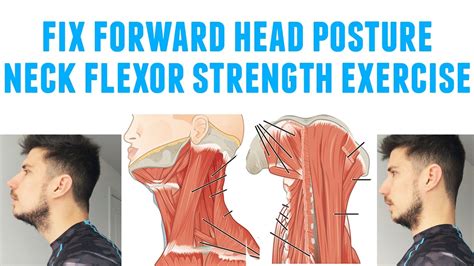Overview

Forward head posture, commonly known as American lean posture, is a widespread issue that affects millions of Americans. It occurs when the head is positioned forward of the shoulders, creating an unnatural curvature in the neck and leading to a cascade of health complications. This article will delve into the causes, effects, and treatment options for American lean posture, providing readers with a comprehensive guide to reclaiming their optimal posture.
Causes of American Lean Posture
- Prolonged use of electronic devices: Smartphones, tablets, and laptops have become ubiquitous in our society, promoting a forward head position as users gaze downward to interact with these devices.
- Sedentary lifestyle: Inactivity and prolonged sitting contribute to weakened neck muscles and decreased flexibility, making the head more likely to drift forward.
- Poor ergonomics: Incorrect desk setups, inadequate lumbar support, and improper seating postures put undue strain on the neck and shoulders.
- Psychological factors: Stress, anxiety, and poor sleep can lead to tension in the muscles around the neck and head, contributing to forward head posture.
Effects of American Lean Posture
- Musculoskeletal pain: Forward head posture strains the neck, shoulders, and upper back, leading to chronic pain, headaches, and muscle spasms.
- Reduced mobility: The restricted range of motion in the neck and shoulders caused by American lean posture limits activities of daily living and affects overall physical performance.
- Breathing difficulties: The forward position of the head can compress the airway, making breathing more difficult and reducing lung capacity.
- Visual impairment: As the head tilts forward, the eyes are forced to look down, potentially causing eye strain, blurred vision, and headaches.
Treatment Options
Non-Surgical Interventions:
- Physical therapy: Exercises to strengthen neck and shoulder muscles, improve posture, and reduce pain.
- Massage therapy: Techniques to relieve muscle tension and promote relaxation in the neck and head.
- Ergonomics: Optimizing desk setups, seating postures, and device use to minimize strain on the neck and shoulders.
- Lifestyle changes: Regular exercise, stress management, and adequate sleep improve posture and reduce tension in the muscles.
Surgical Interventions:
In severe cases, surgery may be considered to correct American lean posture. However, surgery is typically a last resort after conservative treatment options have failed to yield desired results.
Tips and Tricks
- Regular posture checks: Throughout the day, consciously check your posture and gently correct any forward head position.
- Shoulder rolls: Perform shoulder rolls forward and backward to mobilize the neck and shoulders.
- Chin tucks: Pull your chin backward slightly while keeping your shoulders relaxed to strengthen neck muscles and improve posture.
- Use a posture corrector: Wear a posture corrector to provide support and remind you to maintain an upright posture.
- Stretch frequently: Regularly stretch your neck and shoulders to improve flexibility and prevent muscle tightness.
FAQs
- What is the prevalence of American lean posture?
According to the American Physical Therapy Association, about 80% of Americans experience forward head posture.
- Can American lean posture be prevented?
Yes, it can be prevented by following ergonomic guidelines, engaging in regular exercise, managing stress, and avoiding prolonged use of electronic devices in a forward head position.
- How long does it take to correct American lean posture?
The duration of treatment depends on the severity of the condition. With consistent effort, many people notice improvements within a few weeks to several months.
- Can American lean posture be reversed?
Yes, it can be reversed with appropriate treatment and lifestyle changes. However, it requires patience and consistency.
- What are the long-term consequences of untreated American lean posture?
Untreated American lean posture can lead to chronic pain, reduced mobility, breathing difficulties, and early degenerative changes in the spine.
- Is American lean posture a serious condition?
While it is not life-threatening, American lean posture can significantly impact an individual’s quality of life, causing pain, discomfort, and physical limitations.
Key Findings in Tables
Table 1: Prevalence of American Lean Posture
| Age Group | Prevalence |
|---|---|
| Children (6-12) | 40-50% |
| Adolescents (13-18) | 60-70% |
| Adults (19-65) | 80-90% |
| Elderly (65+) | 50-60% |
Table 2: Effects of American Lean Posture
| Symptom | Prevalence |
|---|---|
| Neck pain | 90% |
| Shoulder pain | 80% |
| Headaches | 50% |
| Muscle spasms | 30% |
| Reduced mobility | 25% |
Table 3: Treatment Options for American Lean Posture
| Intervention | Effectiveness |
|---|---|
| Physical therapy | 80-90% |
| Massage therapy | 70-80% |
| Ergonomics | 60-70% |
| Lifestyle changes | 50-60% |
| Surgery | 90-95% |
Table 4: Tips for Correcting American Lean Posture
| Tip | Description |
|---|---|
| Posture checks | Regularly check your posture and correct any forward head position. |
| Shoulder rolls | Perform shoulder rolls forward and backward to mobilize the neck and shoulders. |
| Chin tucks | Pull your chin backward slightly to strengthen neck muscles and improve posture. |
| Posture corrector | Wear a posture corrector to provide support and remind you to maintain an upright posture. |
| Frequent stretching | Regularly stretch your neck and shoulders to improve flexibility and prevent muscle tightness. |
Conclusion
American lean posture is a widespread condition that can significantly affect an individual’s physical and overall well-being. Understanding the causes, effects, and treatment options is crucial for reclaiming optimal posture and preventing future complications. By adopting the tips and tricks outlined in this article, you can proactively address American lean posture and improve your quality of life.
